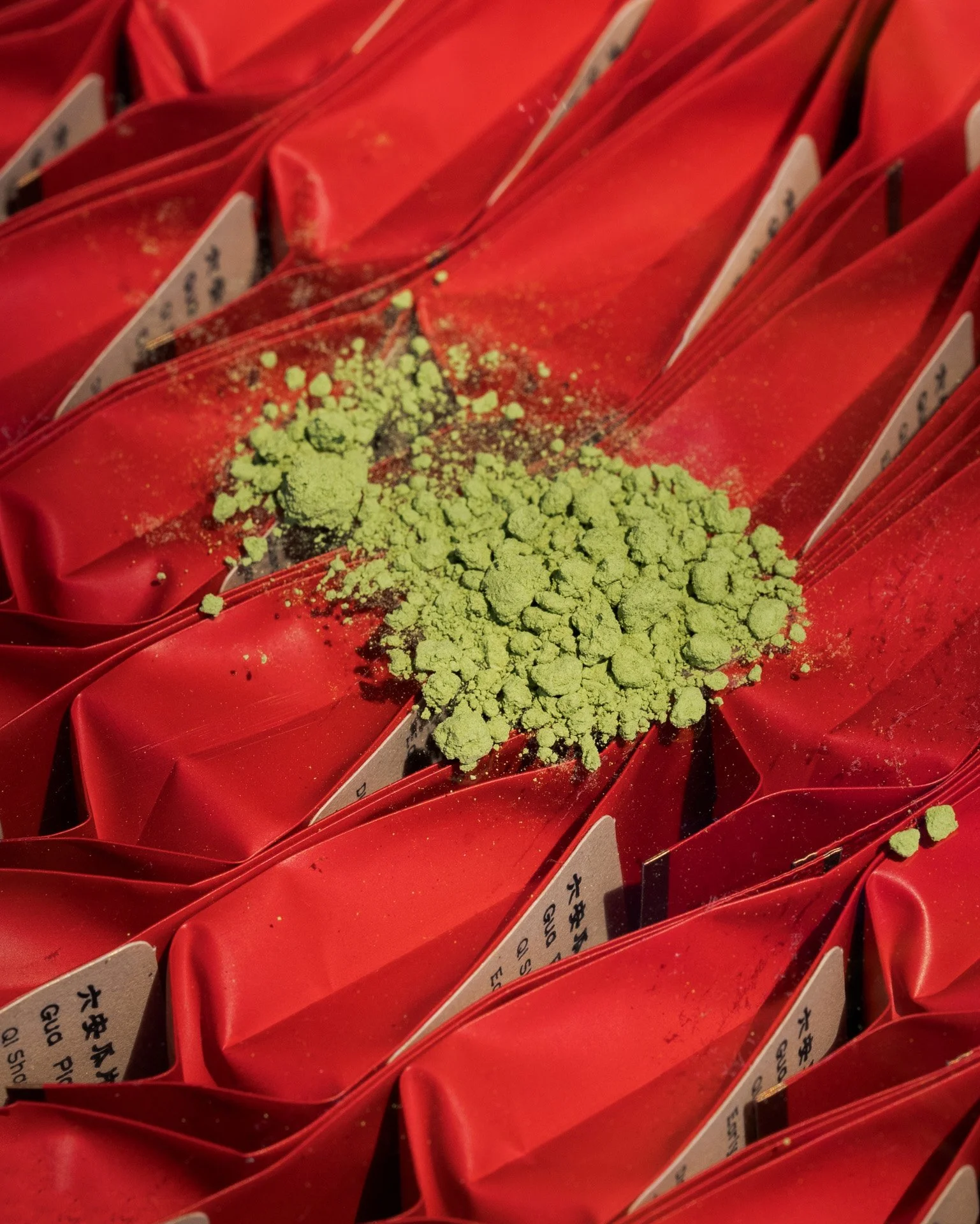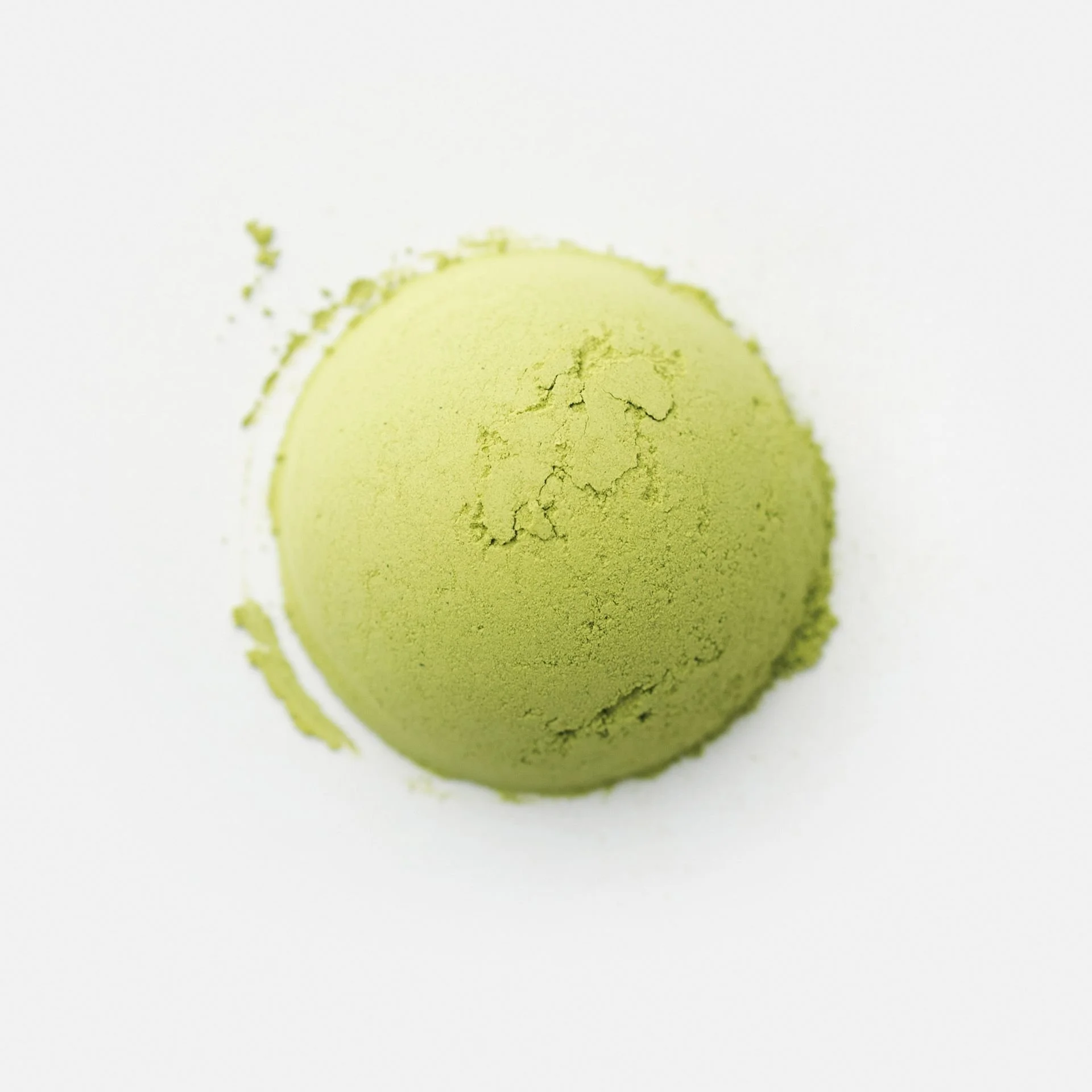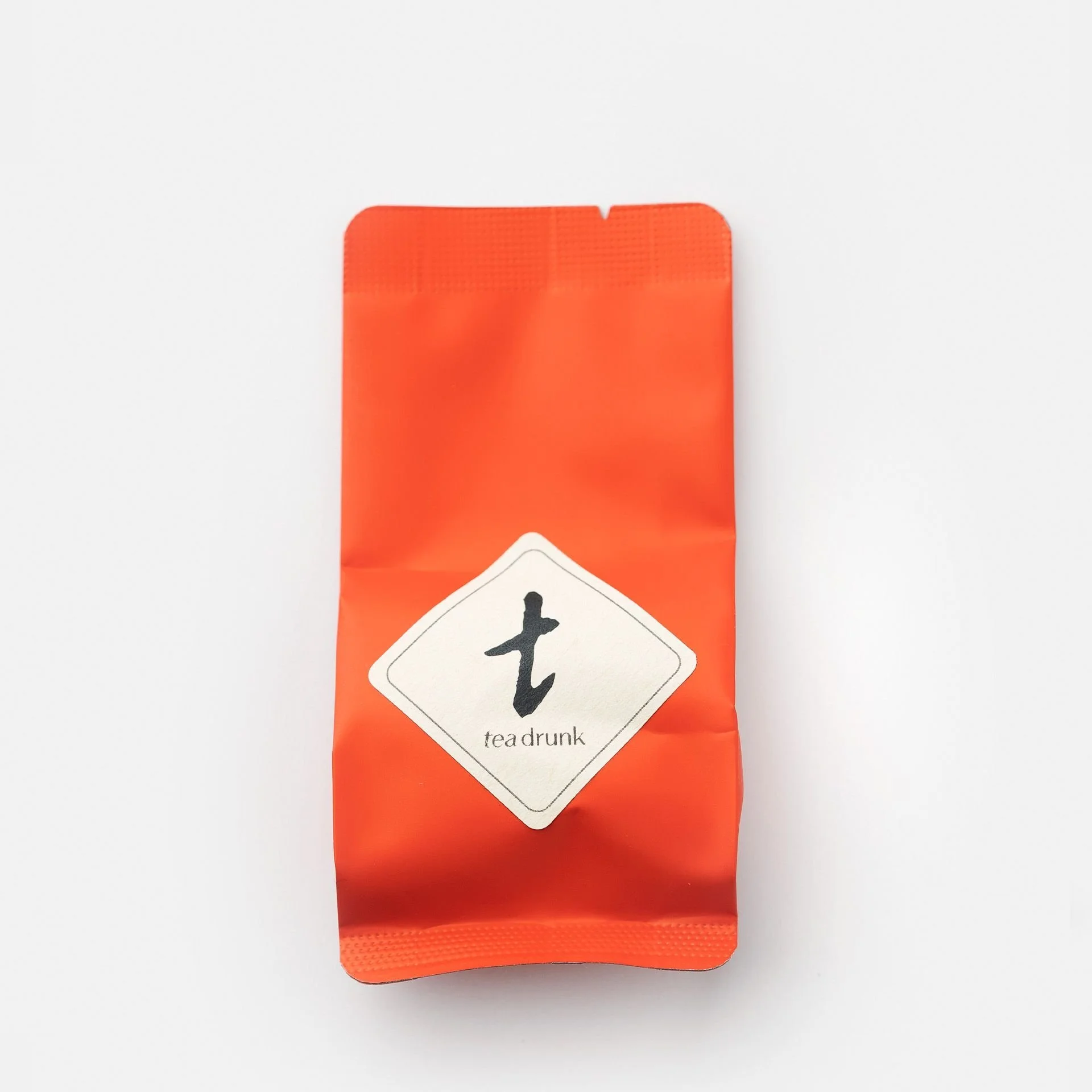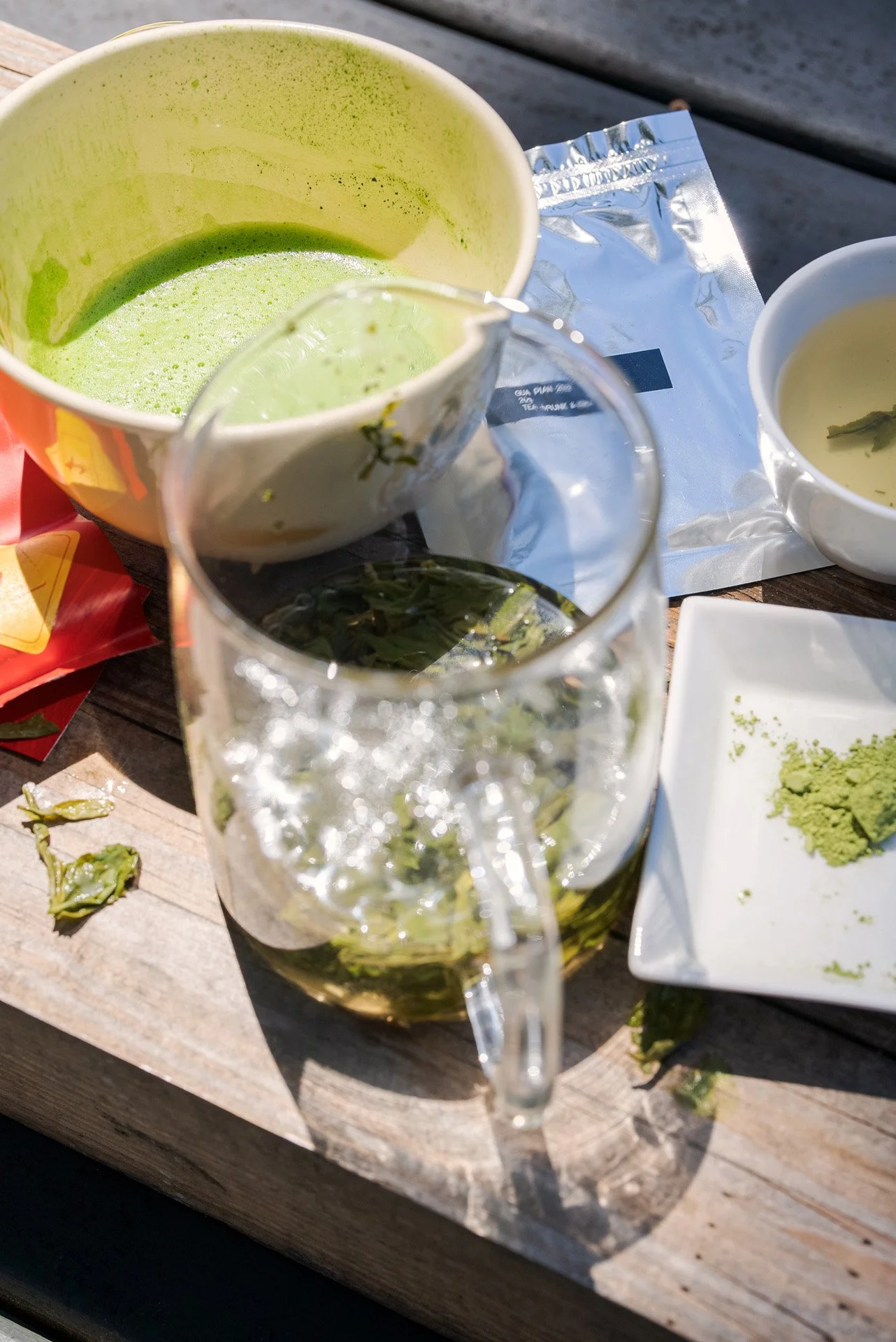Mo Cha, the Historic Precursor to Matcha (末茶) - Tea Drunk X Ooika
Matcha Mill Club is our monthly Matcha membership, where we stone-mill a new single-cultivar Matcha and ship it out within 24 hours of milling every month. This article details the Matcha we shipped for Octorber 2022!
Mo Cha, the Historic Precursor to Matcha (末茶)
Contemporary Japanese Matcha can be traced back to Mo Cha, the 10th-century ground Chinese tea that was popular during the Song Dynasty. Pre-dating even loose-leaf tea, Mo Cha was made by taking steamed green tea, pressing it into cakes, and gentle toasting it before milling it into a powder.
Powdered Mo Cha was whisked, and it was even a common practice to draw on the white foam not too unlike today’s latte art seen in coffee. It was during this time that Japanese monks visited China and came to discover tea which was unknown in Japan.
The Japanese monk largely credited with the introduction of Mo Cha to Japan was Eisai. He also popularized tea outside of the Buddhist temples and among the Nobility with more common people.
How Mo Cha became Matcha
There are distinct differences between Mo Cha and Matcha. These differences evolved slowly over time, as the Japanese gradually adopted tea into their own culture. In China, tea drinking was never ceremonial, though in Japan it became so.
The tools were largely the same, but the Japanese introduced ideas of Wabi-cha which preferred simple domestic bamboo tools and bowls from the Kitchen over expensive foreign imports.
The Japanese also innovated on Mo Cha, introducing new Cultivars, new techniques (such as shading the tea leaves), and perhaps most importantly – continued the practice of milling tea which largely vanished in China. Mo Cha was not shaded and was made from pressed and roasted tea cakes.
The Recreation of Mo Cha
It’s been over 1,000 years since Mo Cha was the most common form of tea in China. Ooika partnered with Tea Drunk, purveyor of the world’s best Chinese tea, to bring back this ancient brew.
The base of the Mo Cha is Lu An Gua Pian 六安瓜片, a tea from Qi Shan, Lu An, An Hui Province, China which you can learn more about here. Put simply, this terroir is one of the most historically important tea terroirs on Earth - and for a good reason, as it produces excellent tea.
Gua Pian was selected because of its similarities to the unground tea used to make Matcha, known as Tencha. Tencha is savory, and sweet, and contains no buds or stems.
Gua Pian is similar: it’s known for its savory, sugarcane-like flavor and contains no buds or stems which is uncommon for Chinese teas. Ooika then mills the Gua Pian into Mo Cha, using traditional stone mills that are not too unlike the historic mills used to grind Mo Cha.
The Value of Mo Cha
It is no exaggeration to say that all Japanese tea stemmed from Chinese Mo Cha (末茶). Mo Cha (末茶) gives us a thrilling pathway to step back in time and brew alongside early Japanese monks such as Eisai (栄西禅師.)
We can experience the flavors, aromas, and textures that so enthralled him that he nearly single-handedly brought tea to the wider population of Japan, sparking over a thousand years of appreciation and reverence. Ooika is deeply humbled to serve you this Mo Cha, but also indebted to Tea Drunk who supplied such outstanding tea.
What’s in the October Matcha Mill Club Box
Matcha Mill Club members received 10 grams of freshly ground Mo Cha, milled fresh from Tea Drunk’s 2022 Semi-handmade Gua Pian. Members also received 2 packs of Tea Drunk’s 2022 Semi-handmade Gua Pian loose-leaf tea — so you can compare and contrast the milled format versus the tea format.
Watch the Tea Drunk X Ooika Tasting Class
One more exciting note: all members of the Matcha Mill Club (that’s you!) were invited to join an exclusive live class with Tea Drunk, going from brewing Mo Cha, to discussing its history and base material (Gua Pian.) Details on accessing the replay will be made available shortly, and this blog post will be updated.






